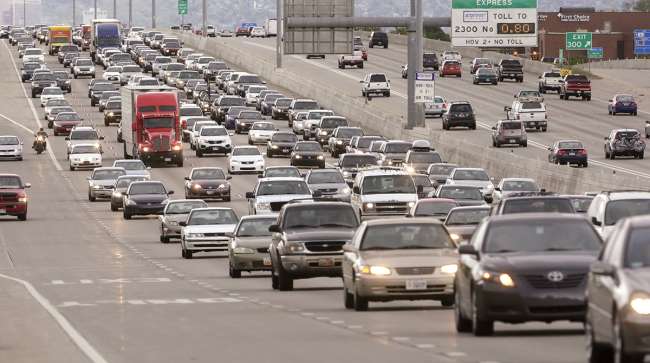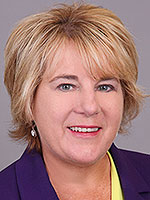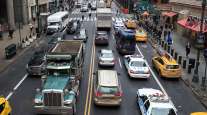Senior Reporter
Start of Summer Driving Season Means More Motorists, Analysts Say

The unofficial start of the summer driving season is finally upon us and that means for millions of drivers it will be that time again to hire a dogsitter, pack the swimsuits, sunblock and folding chairs, and drive to the beach (or lake, or pool) to stay cool.
The American Automobile Association projects that about 37 million motorists will travel during the Memorial Day holiday weekend, a 5% increase over last year. The consistent spike in fuel prices, likely to peak in July, analysts say, does not appear to be deterring motorists from braving bumper-to-bumper madness.
RELATED: Diesel rises for 9th straight week, up 3.8¢ to $3.277
“A strong economy and growing consumer confidence are giving Americans all the motivation they need to kick off what we expect to be a busy summer travel season with a Memorial Day getaway,” said Bill Sutherland, senior vice president of AAA travel and publishing.
Ironically, the journey to creating those wonderful summer memories will include moments of bad to severe traffic, according to transportation analytics firm INRIX. The severity will differ based on the region of the country. INRIX, collaborating with AAA, determined that drivers along the major metropolitan regions are bound to see greater travel times compared with their average commute times throughout the holiday weekend.
“Our advice to drivers is to avoid peak commute times in major cities altogether, traveling late morning or early afternoon, or plan alternative routes,” said Graham Cookson, INRIX’s chief economist.
With congestion along the top freight bottlenecks expected to worsen with the influx of motorists, Rebecca Brewster, president of the American Transportation Research Institute, is encouraging truckers as well as car drivers to plan their routes thoroughly and hit the roadways during off-peak times.
ATRI’s list of the country’s top bottlenecks, ranking Atlanta’s “Spaghetti Junction” interchange where Interstate 285 and I-85 North intersect as the most congested, includes trip planning guidance.

Brewster
“Certainly, we feel those congestion impacts at times like Memorial Day weekend when everyone starts to hit the road. So we know that professional drivers will be feeling those impacts, as well,” Brewster told Transport Topics on May 24, noting that besides its annoyance, traffic congestion on the national highway system costs the industry more than $63 billion annually.
“Those are costs that the trucking industry cannot absorb on its own. So those costs play out across the supply chain and ultimately the consumer pays in increased price of goods that are delivered by those trucks sitting stuck in traffic.”
Policymakers around the country regularly sound the alarm on the impact that outdated and congested infrastructure has on commerce. On May 23, New Jersey Republican Rep. Rodney Frelinghuysen, the U.S. House’s funding leader, reminded colleagues that congestion hinders economic growth and is “slowing our nation down.”
“Hardworking Americans who contribute to the world’s largest economy deserve safe, reliable and efficient transportation,” Frelinghuysen said at a hearing.
Transportation Secretary Elaine Chao, during the kickoff of the U.S. Chamber of Commerce’s Infrastructure Week symposium on May 14, said, “When we get stuck on the roads, or when our planes are late, when our railroads are not delivering freight on a timely basis … all of that hurts our quality of life.”




